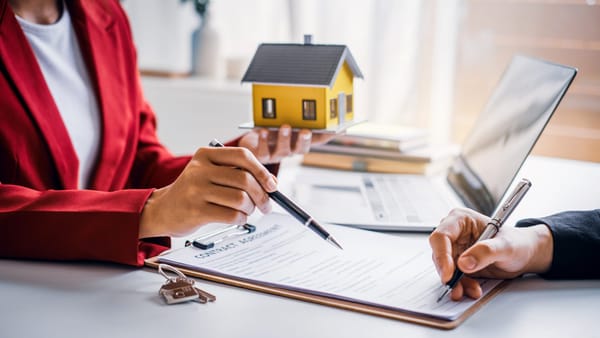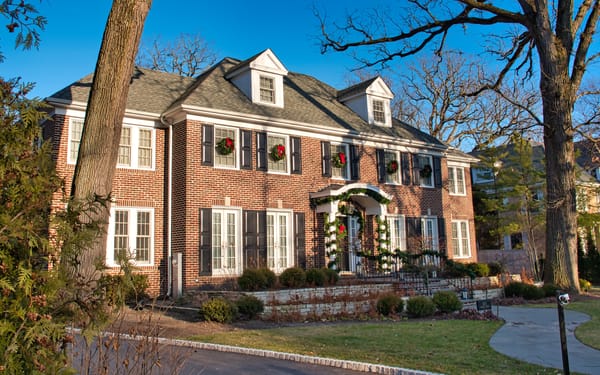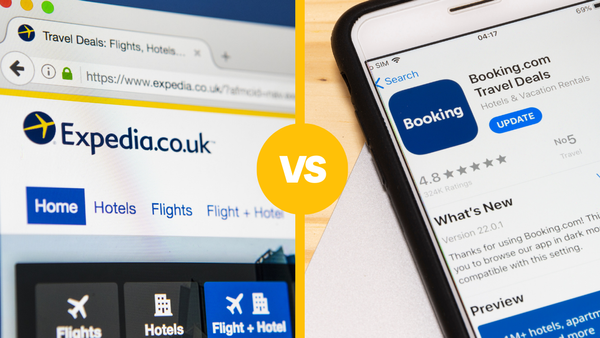Airbnb Pricing Decoded: Strategies to Win Over Guests

Airbnb pricing is one of the key components to ensuring that your short-term rental property is fulfilling its potential. However, when it comes to pricing optimization, the truth is that it requires a lot of forethought and consideration.
With more than 8.1 million Airbnb listings in more than 220 countries, it's not always easy to stand out. It’s clear that establishing a sound pricing strategy is vital to make the most of the platform.
In this article, you will find a few comprehensive pricing strategies that work. But first, it is important to learn what key points you need to think about to come up with your pricing.
5 Major Components of Airbnb Pricing

The important aspect of Airbnb pricing that you should be fully aware of is Airbnb’s service fee structure and other fees that you will charge to guests, which are reflected in the total price.
There are 5 major components to consider when deciding on your pricing strategy. The components include the:
1. Nightly Rate
Your nightly rate is the base price you charge per night for your guests to stay at your house or apartment. These prices can also change depending on whether you want to charge per guest or rent the entire place for one nightly rate up to a maximum number of guests.
2. Service Fees
Does Airbnb charge 15% to hosts? To answer this question properly, we must consider the fee structure. There are two fee structures available to Airbnb hosts. The split fee structure means the host pays a 3% fee, while the guests cover the rest. With the host-only fee structure, hosts bear the entire cost, paying between 14% and 16%.
3. Cleaning Fees
An Airbnb cleaning fee is a one-time fee that you can charge guests for the cleaning of the property after their stay. It is not compulsory to charge this fee, however, most Airbnb owners decide to do so to cover the costs of cleaning after each guest turnover. The median cleaning fee per listing for a one-night stay is around $75 in the US.
4. Security Deposit
A security deposit acts as a safety net in case your guest damages or breaks anything in your Airbnb during their stay. This amount is stated separately and is refundable if the guests do not cause any damage to your property.
5. Extra Charges
Each host will need to decide whether or not to charge extra for additional services and extra guests.
Another common extra fee is a pet fee. Whether you allow additional guests or pets, understand the type of guests you will attract and how similar listings charge these fees.
6. Discounts
Typical percentages for discounts on Airbnb vary but generally fall within these ranges: Weekly discounts often range from 5% to 15% for stays of 7 nights or more, while monthly discounts for stays of 28 nights or longer are typically larger, usually up to 30%.
These percentages can vary depending on the host's preferences, market demand, and the goal of encouraging longer stays.
How Do Guests See Prices?
Airbnb was criticized for non-transparent pricing, as guests often saw a low nightly price while the actual cost, including service fees, cleaning fees, and additional taxes, only appeared at checkout. This led to major frustration. Plus, it's similar to how hotels advertise a base nightly cost but then add resort fees later.
In response, Airbnb introduced the "Display Total Price" feature. When enabled, this setting ensures that the displayed price includes all mandatory fees before taxes, improving price transparency on the platform. However, since this feature isn’t automatic, guests should activate it to see the full cost upfront before booking an Airbnb property.
Choose an Airbnb Pricing Strategy That Suits Your Business Goals
Here are a few different Airbnb pricing strategies to consider so that you can get your pricing optimization on the right track:
Maximum Fill-Rate Strategy
This strategy entails that you do your best to be competitive when it comes to pricing. In order to do so, you have to provide at least the same value as your competitors, but lower prices. In other words, you want to squeeze out the absolute maximum in terms of filling your rentals.
Example: This is best used when you have a gap period of a few nights. Your average price could be $100 per night but to get the gap period filled quickly, you will lower the price to $65.
Who is this good for?
- Hosts who have gaps in their calendars.
Maximum Rate Per Night Strategy
This is another known Airbnb pricing strategy that comes with its pros and cons. It is going to require you to set visibly higher nightly rates to increase the overall net profit from a single booking.
Example: This is best if you own an exquisite apartment in a very attractive destination. You can afford to bump up the price a lot more than the average to attract only wealthy travelers.
Who is it good for?
- Premium-class property owners and unique vacation rentals.
Long-Term Rentals Strategy
This predominantly relies on the premise that you would be able to host your rental for a longer period of time. You will be renting out at monthly rates and dealing with the same customer for a longer period. There are serious advantages and some cons as well.
Example: This is a good strategy if you are the owner of a great apartment in NYC but you need to move out for the next 2 years due to work engagements. You don’t want to sell your property but you want to generate some profit. Long-term renting is the most obvious and convenient option in this regard.
Who is it good for?
- It is suitable for investment properties that are located in areas that are highly regulated.

Balanced Airbnb Management
This particular approach targets the earning of maximum revenue by using all of the aforementioned strategies. This is going to provide you with a maximized profit as well as an increased fill rate.
Example: This is where you want to focus on signing long-term deals in advance to make sure that you have no gaps. However, as soon as the hit period starts, you can switch to a maximum rate or the maximum fill-in strategy to increase your earnings.
Who is it good for?
- Hosts who are absolutely devoted to running their Airbnb or have a team.
How Do I Calculate My Airbnb Price?
1. Property Location
The first point to take into account when determining your pricing is the location of your property. Ask yourself whether the area where your property is located has unique features, like tourist attractions or theme parks, that could drive demand all through the year. It could also be that special events or business events are attracting visitors.
2. Your Property Type and Amenities
When deciding on the pricing, consider the property type and amenities that you provide. If you are going beyond the basics, then your property deserves higher nightly prices. Great amenities such as a swimming pool, hot tub, or breathtaking views can significantly bump up your pricing.
3. Your Target Guest
When setting your Airbnb nightly rate, align the price with your property's target market. If you're offering a luxury retreat for affluent travelers or a budget-friendly space for students and backpackers, your pricing should authentically reflect the guest experience you're providing.
4. Property Expenses
The goal of any Airbnb business is to generate a profit. This means that while it is necessary to price your Airbnb to beat the competition, your price settings need to outweigh the expenses of running it.

Before deciding on your pricing, calculate all the expenses you can expect while managing your rental, and then make sure your nightly rate is high enough to cover your expenses.
5. Competitors' Pricing
In order to win over their bookings, your Airbnb needs to offer more value than the competition.
Search for similar properties in your area and analyze how they compare to your rental in terms of:
- Property size
- Location
- Amenities
- Reviews
- Cancellation policies.
Then, identify your advantages and unique features and try to capitalize on them.
Use Analytics to Set the Pricing Right
With all the different variables to consider, pricing can get quite complicated for any host. Luckily, there are smart tools available to help you simplify the process.
Analytics software like AirDNA, AllTheRooms, and Airbtics provide access to market data, insights that you can use to determine your pricing and assist in creating a viable pricing strategy.
Optimize Your Revenue All Year Round with Vacation Rental Software
Vacation rental software such as iGMS helps to reduce costs, automating the management of your short-term rentals, all without having a big team in place.
Some of the top iGMS features include:
- Managing multiple accounts and listings on the top vacation rental platforms from a single interface
- Triggered automated messaging and a unified inbox to organize your messages into a single feed and ensure prompt replies
- Sharing daily cleaning schedules with your cleaners and auto-assigning cleaning tasks
- Creating essential reports within minutes and tracking key metrics with our Dashboard feature.
Airbnb Smart Pricing and Dynamic Pricing Tools
There is always the option to automate your pricing with dynamic pricing software that automatically adjusts your nightly rates in real time based on current fluctuations in the market and changes in demand and supply. These tools are believed to be more efficient than the Airbnb Smart Pricing tool. Airbnb Smart Pricing is free, but it doesn't always decide based on the best host's interests.
Besides, these tools work on multiple booking platforms simultaneously. Some of them are Pricelabs, Wheelhouse, and DPGO. All of these tools are also able to integrate with iGMS, allowing you to conveniently manage your pricing on the same interface as all your other hosting tasks.
About the Author
Callan Riddles is the former Content and Social Media Specialist at iGMS. Callan has a passion for finding new ways to help vacation rental businesses thrive. In her free time, she loves to travel, read, and experience all the new things that life has to offer.






